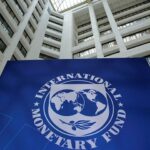DOLLAR MARKET : Pakistan’s rupee witnessed historic depreciation against the US dollar in the inter-bank market on Thursday, settling with a loss of 9.6% in a single session as the country finally moved to fulfil part of the International Monetary Fund (IMF) conditions that included a ‘free-float exchange rate’.
As per the State Bank of Pakistan (SBP), the rupee closed at 255.43 against the US dollar, a depreciation of 9.61% or Rs24.54.
“Officially the largest decline in PKR, both in absolute and % terms, since the introduction of the new exchange rate system in 1999,” said Ismail Iqbal Securities in a note.
Arif Habib Limited (AHL) said overall, this was the second highest decline in % terms in history. “The highest was in October 1998 when it fell 9.9%,” AHL told Business Recorder.
Earlier during the day, the currency was trading at 231.
Many analysts said the rupee was bound to see significant depreciation as Pakistan moved to meet conditions of the IMF to revive its bailout programme.
Fahad Rauf, Head of Research at Ismail Iqbal Securities Limited, said it seemed like the rupee was let go today.
“This was a market-driven rate,” Rauf told Business Recorder. “This is a sign that we are moving closer to reviving the stalled IMF programme.”
The market expert said the development was much-needed as capping the inter-bank rate only led to a creation of the grey market.
“Exporters were not bringing their proceeds, while remittances declined as customers moved towards illegal channels offering premium rates,” he said.
Another market expert, on condition of anonymity, called it a “much needed step”.
“You cannot fight market forces. The market always wins,” said the analyst.
“This development will improve the dollar supply to a significant extent. The IMF programme revival is just around the corner now. We could see major news regarding it in the next 10-15 days.”
The rupee has been on a depreciating run for a while, but the magnitude of the fall has been low.
On Wednesday, the rupee had registered a loss for the 26th successive session against the US dollar to settle at 230.89 after a decrease of Re0.49 or 0.21%.
In a key development, the Pakistani rupee on Wednesday reportedly fell significantly in the open market as well, hitting levels beyond Rs250 per US Dollar. However, as the day progressed, customers struggled to get their hands on the greenback.
The on-ground situation, Business Recorder found, was that dollars continued to be scarce in supply for customers approaching the exchange companies.
The development comes after the Exchange Companies Association of Pakistan (ECAP) decision to “remove a self-imposed price cap” it used to sell and buy dollars in the open market, adding that it will now trade in accordance with the prevalent demand and supply dynamics.
Inter-bank market rates for dollar on Thursday
BID Rs 255.5
OFFER Rs 260
Open-market movement
In the open market, the PKR lost 19.40 rupees for buying and 19 rupees for selling against USD, closing at 260 and 262, respectively.
Against Euro, the PKR lost 3.50 rupees for both buying and selling, closing at 276.50 and 279 respectively.
Against UAE Dirham, the PKR lost 1.20 rupees for both buying and selling, closing at 71.50 and 72, respectively.
Against Saudi Riyal, the PKR lost 2 rupees for buying and 2.10 rupees for selling, closing at 69.50 and 70.10, respectively.
Open-market rates for dollar on Thursday
BID Rs 260
OFFER Rs 262
While Internationally, the dollar lolled near an eight-month low against its peers on Thursday, as a gloomy US corporate earnings season stoked recession fears and as traders stayed on guard ahead of a slew of central bank meetings next week.
The US dollar index, which measures the greenback against a basket of currencies, last stood at 101.53, languishing near last week’s eight-month trough of 101.51.
Oil prices, a key indicator of currency parity, were up in early Asian trade on Thursday as US crude stocks rose less than expected, while a weaker dollar made oil cheaper for non-American buyers.


